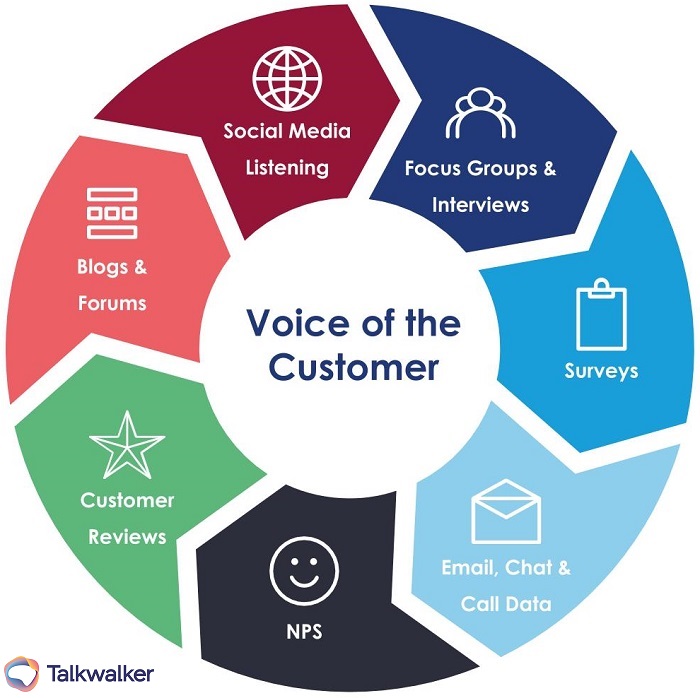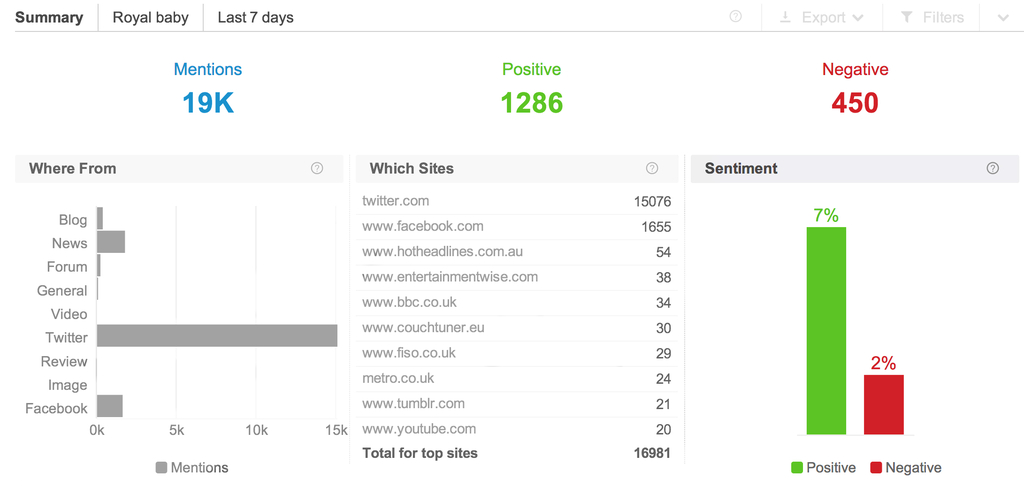How to Tune-in to the Voice of the Customer
Your marketing strategy should never be a guessing game. To succeed in today’s crowded and competitive markets, generate high-quality leads, and convert leads reliably to sales, you must tune in to the voice of the customer.
The voice of the customer (VoC) is the key to connecting authentically with your audience and demonstrating why your solution is the best one for them. Companies that do this successfully consistently win new business over their competitors.
In fact, 68% of B2B buyers say they specifically chose their current vendor over other options because they showed a stronger understanding of their company and its unique needs.
In this article, we’ll define the voice of the customer in more detail and cover ways that you can integrate VoC insights into your strategy to drive business growth.
Quick Takeaways
- The voice of the customer encompasses customer feedback across all communication channels, including marketing, sales, and customer service/support interactions.
- Key methods for VoC data collection include surveys, polls, reviews, brand sentiment analysis tools, and focus groups.
- VoC data should be prioritized and made actionable through frequent data reporting and intentional inclusion in strategy decisions.
What is the Voice of the Customer?
The Voice of the Customer (VoC) is a concept that captures and analyzes the feedback, opinions, preferences, and sentiment expressed by customers regarding a product, service, or brand.
It represents the collective voice of a company’s target audience and serves as a critical tool for businesses to understand and meet customer expectations effectively. VoC also encompasses many aspects of customer experience and perception, including satisfaction levels, complaints, suggestions, and overall brand sentiment.
The voice of the customer is researched and defined through a variety of methods that include customer surveys and interviews, social media monitoring, and audience data analysis. These approaches provide direct insight into customer pain points, motivations, and decision-making processes that ultimately lead them to purchase.

By actively listening to the voice of the customer and monitoring VoC metrics, organizations can gain a deep understanding of their target audience, refine their strategies, and develop the right products, services, and solutions to align with customer needs.
How Do Brands Analyze the Voice of the Customer?
Analyzing the voice of the customer involves more than just data collection—it requires extracting key themes and patterns from customer feedback, identifying trends, and prioritizing areas for improvement.
The process allows businesses to uncover actionable insights, identify gaps in their offerings and opportunities for improvement, and make informed decisions to drive higher customer loyalty and satisfaction. In addition, VoC insights serve as an important source of information for other teams that impact the customer experience, like customer service and support.
Implementing a robust VoC program helps companies foster a customer-centric culture, enhance customer experiences, and differentiate themselves from competitors. It enables businesses to proactively address customer concerns, personalize their interactions, and deliver products and services that truly resonate with their target audience.
Here are some key components of VoC data collection and analysis:
Seamless Customer Feedback Collection
Direct feedback from your current and potential customers is the best source of insight into the voice of the customer. Enhance your ability to track and analyze it by integrating customer feedback collection points into your marketing channels. There are countless opportunities to do this, including:
- Social media polls
- Email surveys
- Content rating (ex: a simple thumbs up or down)
- Post-purchase review requests
- Focus groups
- Net Promoter Score (NPS) surveys
Brand Sentiment Analysis
Brand sentiment analysis measures the overall attitudes and perceptions customers have about your brand. It reflects the positive, negative, or neutral sentiment expressed by customers in their interactions, feedback, and conversations. Today, it’s measured with sophisticated AI tools and technologies that incorporate natural language processing (NLP) to analyze text.
The best way to monitor brand sentiment is with a sentiment analysis platform that can track and measure it across marketing channels and summarize insights in a single dashboard, like the example pictured below.

Customer Reviews and Testimonials
Customers are often most honest in their reviews and testimonials—feedback they leave after they’ve used a product or service, much of the time without having to directly interact with the company.
Third-party review websites are especially helpful for gathering objective insights from your customers. These are especially prevalent today for SaaS and other technology products on sites like G2 or Capterra.
Content Engagement
Content marketing is a central part of every modern digital marketing strategy, and the data you can collect through content sharing is valuable to understanding the voice of your customer.
This may include direct feedback (such as likes or comments on a blog post) as well as behavioral insights like time on page, bounce rates, shares (and the like) that can indicate the topics and types of content your audience cares about most.
Customer Service and Support Interactions
Customer service and support teams encounter more VoC insights than perhaps any other team at your organization. They hear how customers feel about your brand, products, and services as well as the problems and challenges they encounter with all of the above.
Make customer feedback collection systematic for your service and support teams with software tools to automate the process and consistent collection points, such as post-interaction surveys.
What to Do with VoC Insights
In the end, voice of the customer insights are only as powerful as the extent to which you use them. Standardize your VoC data collection, analysis, and reporting processes and make it a priority for your teams to leverage it in strategy development and everyday decision making.
Develop a tangible summary of the voice of your unique customer based on insights you collect and use it to refine frameworks like ideal customer profiles and buyer personas that you use to target your marketing messaging.
Finally, align your customer-facing teams, including marketing, sales, customer service, customer support, and customer success around the VoC to drive consistent communication.
Combining the power of VoC data with these actionable steps to apply them strategically over time will translate to stronger customer relationships, higher customer satisfaction and loyalty, and ultimately higher sales and revenue for your business.
How Televerde Can Help
Televerde delivers comprehensive marketing, sales, and customer service solutions that empower organizations to stay in touch with their target audiences and consistently serve them well. Our solutions are rooted in proven industry best practices and customized to meet the unique needs of every client.
Contact our team today to learn more about how we can help you grow your business.



